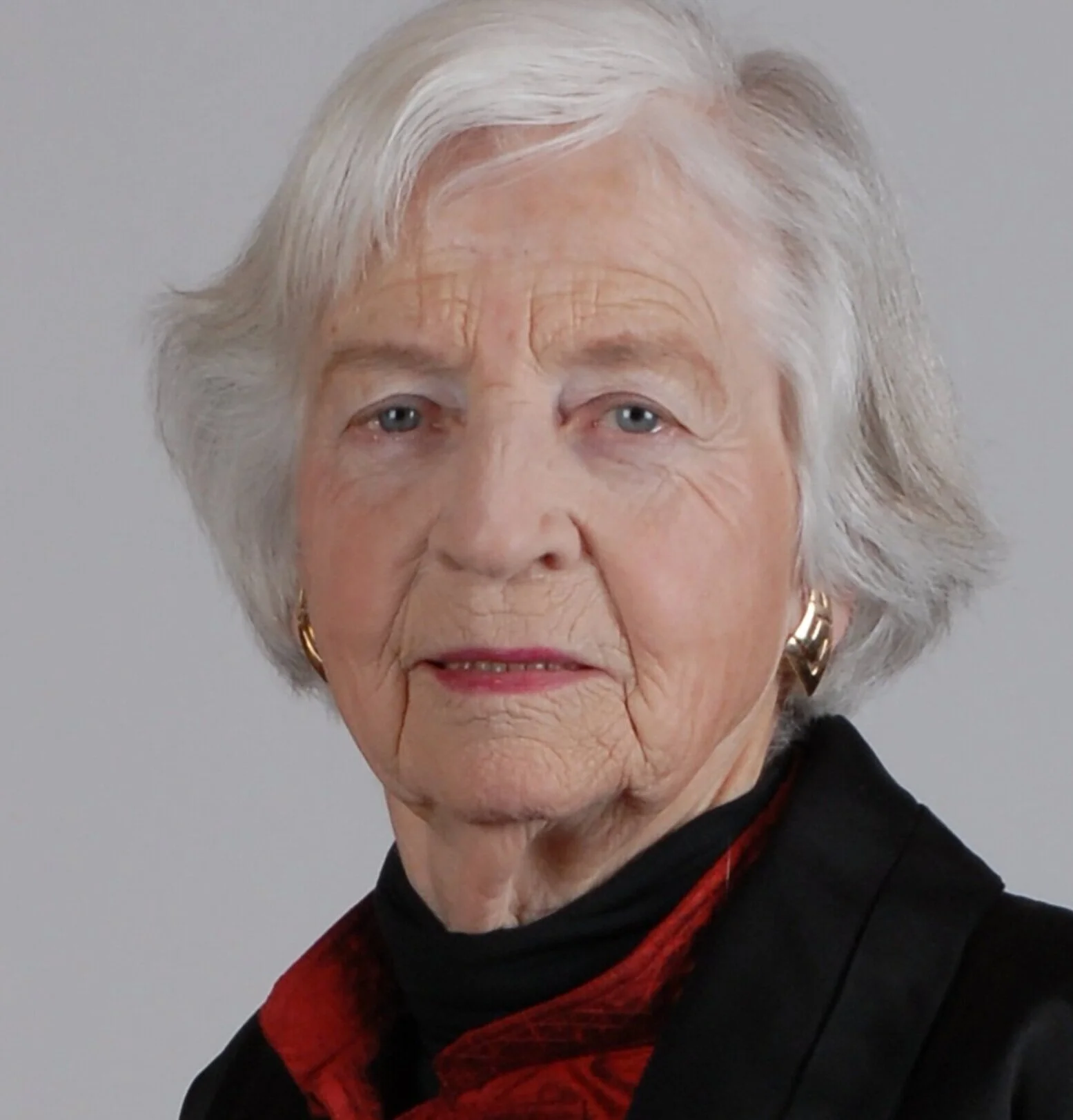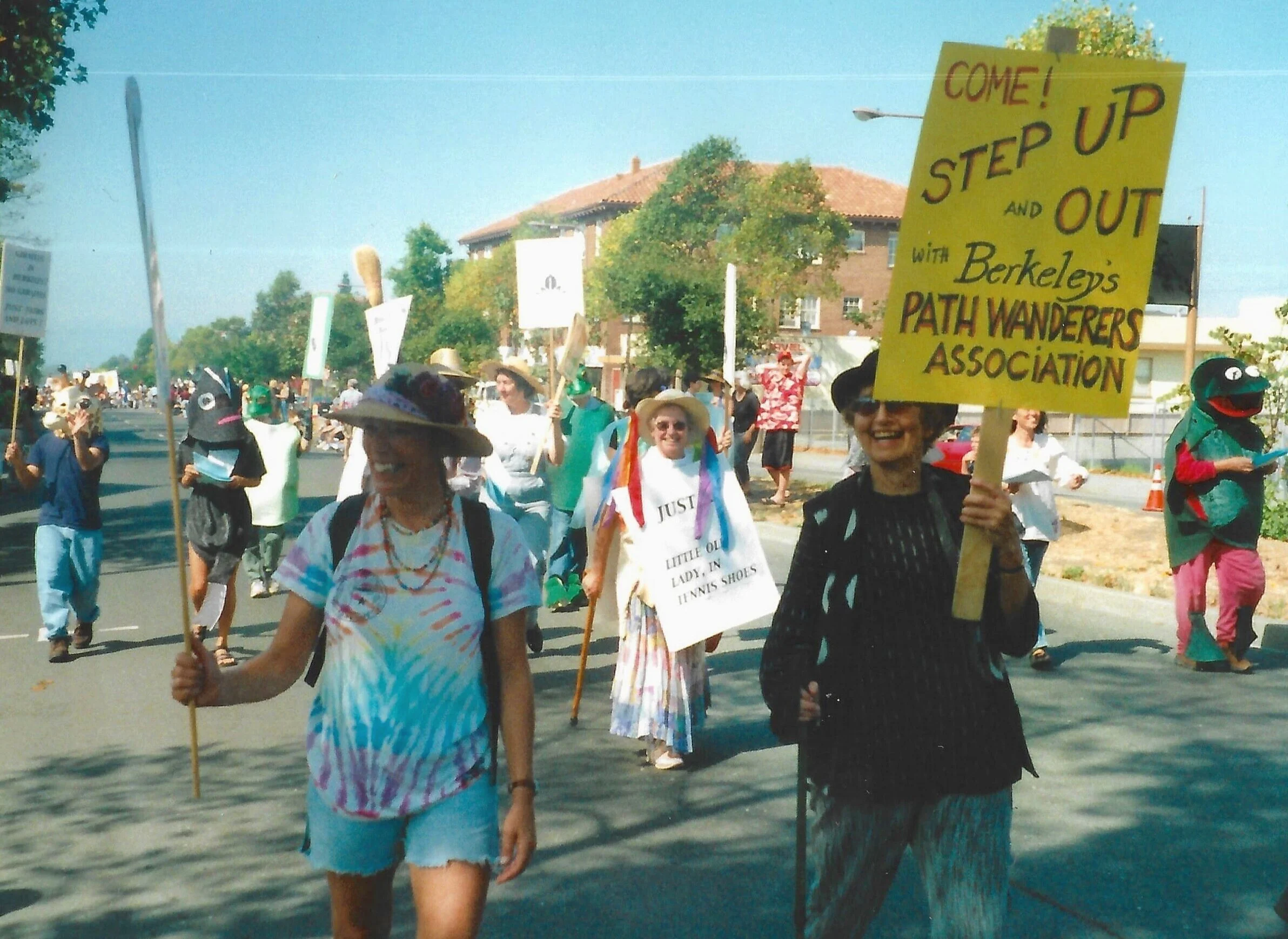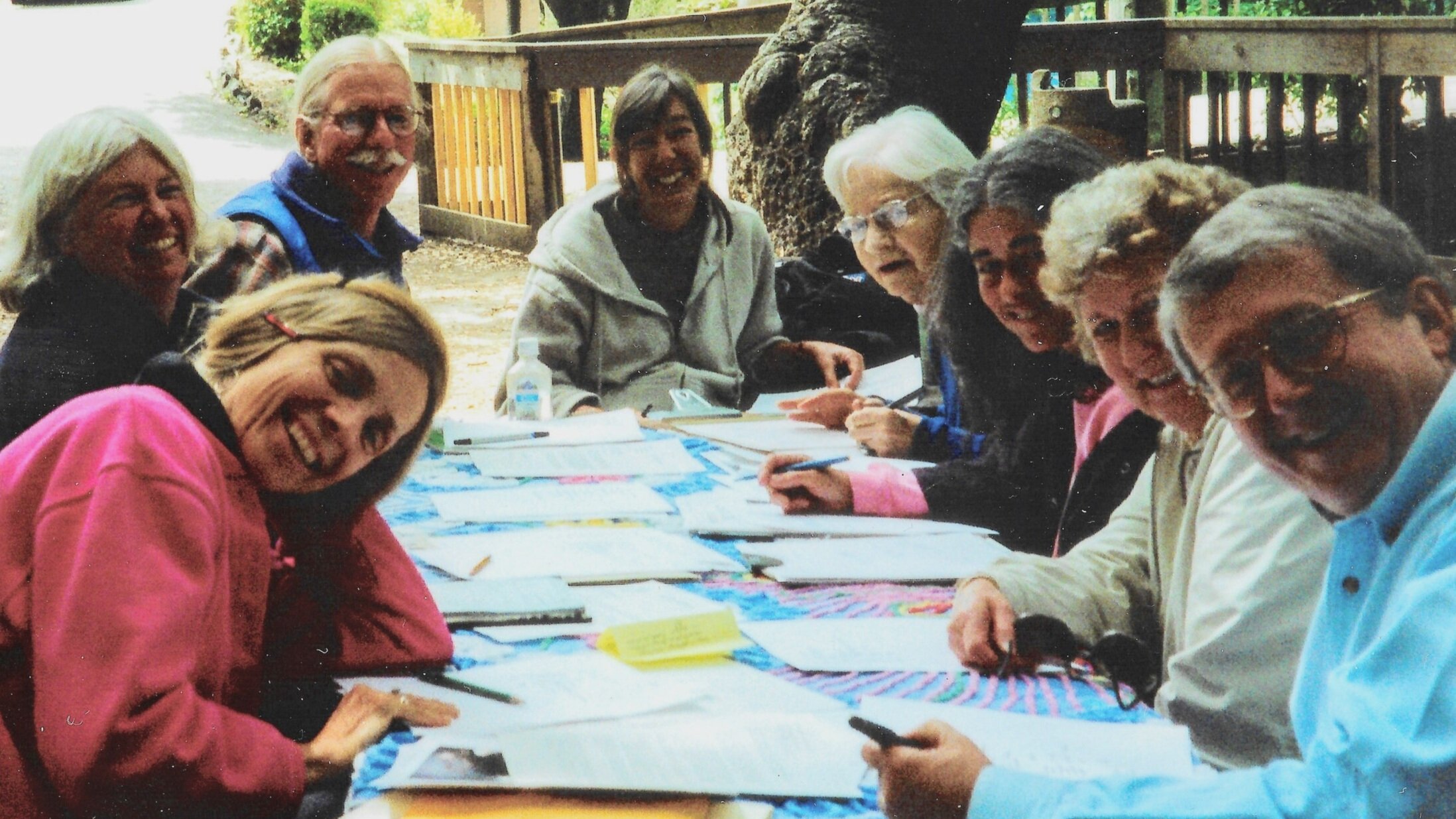“None of this work would have been possible without our founders' grit and dedication.” — BPWA President Alina Constantinescu
Jacque Ensign (founder) at her 90th birthday.
On January 19, the Berkeley city council unanimously approved the renaming of four pedestrian paths in honor of the founders of Berkeley Path Wanderers Association (BPWA): Ruth Armstrong (Moskovitz), Jacque Ensign, Eleanor Hall Gibson and Patricia DeVito.
“The contributions of women like Ruth, Jacque, Eleanor and Pat are often overlooked, despite their great importance,” said Berkeley Councilmember Sophie Hahn (District 5), who championed the effort to rename the paths. “I was thrilled to be able to achieve this honor for such a deserving group of women and thank them for all their care and generosity over many years.”
Ensign, who recently turned 90, resides in her family’s home on the 1000 block of Shattuck Avenue. She recalls walking down from the Marin Circle along the unmarked path parallel to Los Angeles Avenue to see 25-cent movies at the Oaks Theater on Solano Avenue.
“As a native of Berkeley I am delighted to have a path I frequently used as a kid named for me,” she said. “I am pleased that BPWA, with a strong rotating board, has been able to provide a needed resource in Berkeley.”
Austene Hall said that her mother, Eleanor Hall Gibson, moved to Berkeley from New York in 1989 at age 70 and jumped right into community affairs. “She loved to walk, and she soon became good friends with Jacque Ensign and Ruth Armstrong. They asked her if she'd be interested in working with them on this, and she jumped at the chance.”
Gibson died in 2016 at age 96. “She would have been honored and touched by having a path named for her,” Hall said. “She, along with the three other women founders, were always upbeat about the paths even when problems of access, restoration and even finding long-forgotten ones, seemed overwhelming.”
The renamed paths are:
Eleanor Hall Gibson (founder)
Eleanor Hall Gibson Path, off Keith Avenue near Shasta Road;
Ruth Armstrong Path, a new walkway connecting Hearst Street and Berkeley Way at Walnut Street through the UC complex;
Jacque Ensign Way, a previously unnamed path running alongside Los Angeles Avenue from Solano Avenue to the Marin Circle; and
Patricia DeVito Path, a pedestrian connector between Sterling and Miller avenues.
The Eleanor Hall Gibson and Patricia DeVito paths are part of a group of 22 currently impassable public paths. “BPWA volunteers are working diligently to daylight and develop these paths over the next few years,” said BPWA President Alina Constantinescu.
Public rights-of-way for pedestrians
Berkeley’s network of more than 120 paths are public rights-of-way that were designated when neighborhoods were subdivided into lots in the early 20th century. Before automobiles became common, the paths served as pedestrian transportation routes, linking residents to street cars, parks and schools, and as short cuts around neighborhoods.
Left to right, path wanderers Maggie Hodges, Jacque Ensign (founder), and Helen Wynne stepped out at the How Berkeley Can You Be? parade in September 2000.
By the time the Oakland firestorm hit in October 1991, many paths in the Berkeley Hills were obstructed by vegetation and fences, making them impassable for residents to use as evacuation routes, or for firefighters to haul equipment from winding street to winding street.
In mid-1997, Armstrong, parks activist and a founder of Berkeley Partners for Parks, posted a notice at the North Berkeley library branch looking for community members interested in advocating for Berkeley’s pathways.
The four founders quickly had their first meeting and in December 1997 established BPWA, which was “dedicated to the creation, preservation, and restoration of public paths, steps and walkways in Berkeley for the use and enjoyment of all.”
In strongly supporting renaming of the paths, Susan Schwartz, president of Friends of Five Creeks and a member of the first BPWA board, told the city council in a letter: “Ruth and Jacque were the experienced, energetic leaders who sparked major efforts like the initial volunteer survey of all paths and, later, the best-selling path map. Pat, retired from city staff, awakened us to the critical role paths could play in emergencies as well as past city studies of the network. Eleanor was a steady, quiet voice who made sure finances, data, and other organizational matters were taken care of.”
All-volunteer paths advocacy
BPWA held its first public meeting in May 1998 and had more than 250 paid members by the end of the year. Over the following 2 decades, BPWA has played an essential role in advocating for Berkeley’s paths by clearing vegetation and restoring impassable and unbuilt paths; creating a city map featuring the paths, which is in its 9th edition; leading popular walks around town, and beyond; and securing resources to replace signs, make repairs, and fix and add handrails. Inspired by BPWA's example, citizens in El Cerrito, Kensington, and other communities have revived and extended their path networks.
In remarks to the city council (over Zoom), Constantinescu said, “Before starting our volunteer efforts in 1998, many of Berkeley's paths were forgotten. Through our work, we have since daylighted 36 previously impassible paths, organized hundreds of community workdays, and introduced countless numbers of residents to the path network.
“None of this work would have been possible without our founders' grit and dedication,” Constantinescu said.
Supporters of the plan also noted that renaming the paths for the four women helps to correct historic inequalities. “I'm thrilled to see more women names in our public spaces,” Constantinescu told the council.
Hahn added, “Twenty years ago, a small group of women organized themselves to do something amazing for all of Berkeley. They asked for nothing except the help of other community volunteers, who have worked diligently over decades to make their dream of revitalized paths a reality.”
An early BPWA board met at Live Oak Park in May 2000. Left to right, Charlie Bowen, Susan Schwartz, Tom Edwards, Maggie Hodges, Eleanor Hall Gibson (founder), Ruth Armstrong (founder), Patricia DeVito (founder) and Jay Cross.





